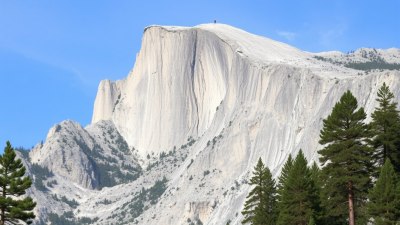The Secret Connection Between Cinematic Stories and Real-World Wanderlust
Explore how cinematic narratives fuel our desire to travel and explore the world beyond.

In a world where stories come alive on screen, the connection between cinematic narratives and our intrinsic desire to explore is undeniable. Cinema has a unique ability to transport audiences in ways that few other mediums can. Whether it’s the lush landscapes of New Zealand in 'The Lord of the Rings' or the vibrant streets of Paris in 'Midnight in Paris', movies create an alluring sense of wanderlust that can inspire viewers to embark on their own journeys.
This article delves into the intricate link between films and travel, examining how the narratives, characters, and settings in cinematic stories evoke feelings of longing and exploration.
The Allure of Cinematic Landscapes
One of the most compelling aspects of films is their ability to showcase stunning cinematography that highlights the beauty of our world. Filmmakers meticulously choose locations that serve as more than just backdrops; they become characters in their own right. For instance, the dramatic cliffs of Big Sur in 'The Graduate' or the idyllic beaches of Hawaii in 'Jurassic Park' are not merely places where action occurs; they embody emotions and themes that resonate with audiences.
The power of such imagery lies in its ability to ignite the viewer's imagination. Many people find themselves daydreaming about visiting these breathtaking sites after watching a film. The seed of wanderlust is planted not just by the story, but by the imagery that accompanies it. Scenic views evoke emotions, often leading individuals to seek out similar experiences in real life.
Stories That Inspire Travel
Films often frame relatable characters who embark on transformative journeys, which can profoundly resonate with audiences. Take 'Eat Pray Love', for instance, where the protagonist, played by Julia Roberts, seeks happiness through travel and self-discovery across Italy, India, and Bali. This narrative not only encourages viewers to consider their own paths but also makes destinations appear inviting and attainable.
Moreover, these stories often depict the challenges and rewards tied to travel. Characters grapple with their fears, overcome obstacles, and ultimately discover more about themselves. As viewers connect with these narratives, they become inspired to tackle their own fears and seek out their adventures, often mirroring what they’ve seen on screen.
Emotional Connections and Nostalgia
Emotions play a crucial role in forging connections between the stories we consume and our desires to wander. Films frequently evoke feelings of nostalgia, whether it's through a character's childhood home or a significant trip taken years ago. These emotions can tap into personal memories of travel, making viewers feel a yearning for distant places or long-lost experiences.
Furthermore, movies that capture life's fleeting moments—such as 'Before Sunrise' or 'The Secret Life of Walter Mitty'—offer reflections on the importance of seizing opportunities and exploring the world around us. This thematic emphasis on temporality can serve as a catalyst, propelling individuals into action to explore new landscapes and cultures.
The Role of Cinematic Storytelling in Travel Marketing
Advertising and travel marketing have taken cues from the film industry as well, utilizing cinematic elements to attract potential tourists. Destinations often hire filmmakers to create promotional videos that highlight their landscapes and cultures, aiming to inspire wanderlust similar to that generated by movies.
This marketing strategy, often referred to as ‘cinematic tourism,’ seeks to evoke the same emotional responses found in films. By showcasing destinations in a storytelling format, they hope to resonate with audiences, prompting them to consider these places for their next adventure. This symbiotic relationship results in a cycle where films inspire travel, which in turn boosts the visibility of the locations featured on screen.
Cultural Representation and Real-World Impact
Cinematic stories not only inspire wanderlust but also provide insight into various cultures and lifestyles, offering viewers a glimpse of what life could be like in a different part of the world. Films such as 'Slumdog Millionaire' delve deep into the essence of Indian culture, while 'Out of Africa' presents a romanticized yet impactful narrative of life in Kenya.
The representation of diverse cultures can work to break down stereotypes and foster understanding. This portrayal can lead viewers to develop a desire to visit these places to gain firsthand experience, further blurring the lines between fiction and reality. It allows audiences to engage with the nuances of different cultures, creating a longing to explore the richness of global societies.
Adventures in Film vs. Real Life
While cinematic adventures can stoke our desire to travel, it is essential to differentiate between the experiences depicted in films and the reality of travel. Films often glamorize travel, showcasing flawless encounters and picturesque moments that may not reflect the complexities of real-life journeys.
Nevertheless, this romanticized portrayal does not diminish the impact of cinema on wanderlust. Watching characters traverse the globe can serve as motivation to explore, try new foods, learn new languages, and connect with people from different backgrounds. The yearning that films create can lead audiences to seek authenticity in their adventures, often enriching their travel experiences.
The Cinematic Impact on Millennial and Gen Z Travelers
Particularly amongst Millennial and Gen Z demographics, the influence of cinema on travel is more profound than ever. With a myriad of travel-related content available across various platforms, including films, television series, and documentaries, younger audiences are constantly exposed to narratives that celebrate exploration and adventure.
Social media, too, plays a significant role in this cultural phenomenon. Travelers share their experiences online, often mimicking the cinematic moments that captivated them on screen. This creates a ripple effect, as their surroundings become a canvas for others to replicate those idyllic shots and experiences. Moreover, there’s now an active movement towards ‘Instagrammable’ travel, where destinations are chosen based on visual appeal and popularity stemming from cinematic influences.
Cinematic Stories as Catalysts for Exploration
In conclusion, the secret connection between cinematic stories and our desire for wanderlust is rooted in the power of storytelling. With their ability to evoke emotions, present stunning visuals, and showcase diverse cultures, films inspire countless individuals to chase their dreams of travel. The additional layer of nostalgia and relatable narratives can motivate viewers to turn their dreams into reality, persuading them to explore new destinations and embrace the richness of life that awaits beyond their doorsteps. As the world continues to evolve, the impact of cinema on our travel aspirations will undoubtedly persist, forging lasting connections between the allure of stories and the thrill of exploration.











